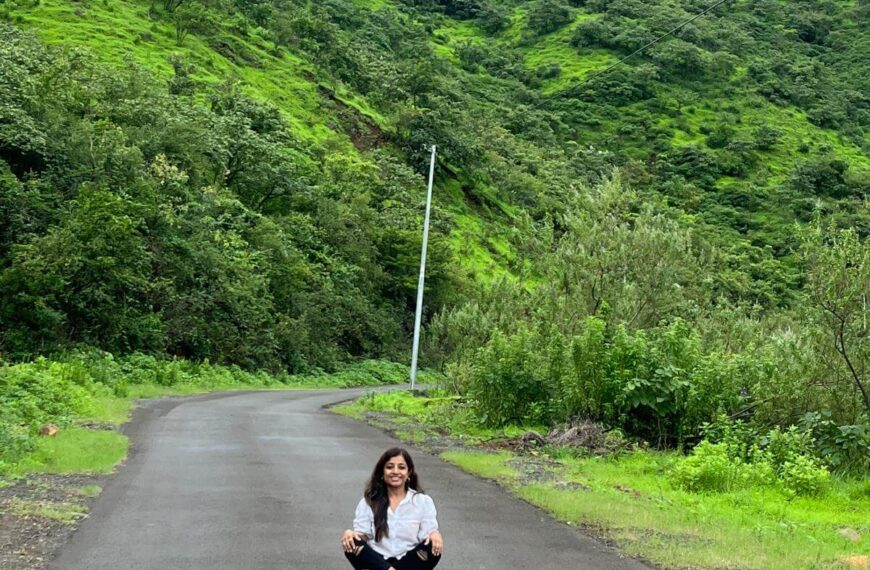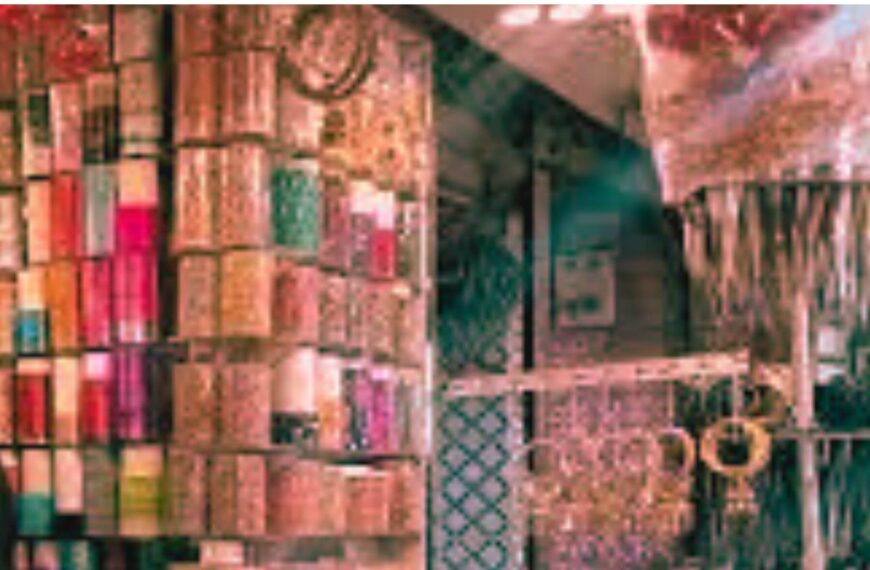Lily tells us about the beautiful city of Hyderabad that is built mostly around artificial lakes on a hilly terrain. The most prominent one being the Hussain Sagar Lake. The twin city of Secunderabad is across this lake and that is where we lived in the Cantonment, which was our home for seven wonderful years. Known as the city of pearls, it was natural that the author learnt so much about their colours and types. Most army wives put together a pretty cache of pearl strings by the time they went ahead to another place. The jaunts to the ancient bazaars of the old city were a treat. Each trip to Laad Bazaar, Begum Bazaar and Sultan Bazaar was like walking through an era long gone past. A wealth of bangles made with lacquer embellished with tiny pieces of glass like artificial diamonds greeted one in Laad Bazaar and in the labyrinth of lanes crisscrossing around the Charminar. The one-kilometre-long street has been there since the times of the Qutub Shahis and the Nizams. Besides bangles, the shops sell semi-precious stones and pearls galore. Saris and the traditional ethnic dress of Hyderabadi brides, known as Khara Dupatta also dazzle. Here’s an interesting account of the columnist’s life and times, in the weekly column, exclusively for Different Truths.
A Hyderabad posting came as an intriguing proposition. I had never ever gone so far down south of the country. The Vindhyas were like a demarcation for a different and varied culture. Geography and history lessons loomed into my mind as I visualised the city on the banks of the Musi River. It was established by Quli Qutub Shah. Nizam is short for Nizam Ul Mulk, which means the administrator of the realm. The Nizams ruled over the largest and most prosperous princely states of India, following the decline of the Mughal power. Seven Nizams ruled Hyderabad for two centuries.
We reached the fourth most populated city in India with an air of suspense and expectation. I had heard that it was a diamond trading center since ages and had gained international prominence because the famous Kohinoor (Mountain of Light) diamond was mined near Guntur not too far from Hyderabad. It was initially with the rulers of the Kakatiya dynasty and changed many hands with a lot of infighting. The Lion of Punjab, Maharajah Ranjit Singh had it till the British took it after the conquest of Punjab. The Kohinoor is set on the British Queen Mother’s crown and is displayed in the Tower of London. Prince Albert, had it cut down from its original size as he found it too dull! The Royal British males never wore it, as it brought ill luck. So here I was in the famed city of pearls with thoughts of diamonds invading my waking hours and intruding on my dreams as well. A new Urdu word that I added to my repertoire was Almas. It meant uncut diamond.
Bracing myself for the unique culture of Hyderabad, I walked into the popular Paradise Biryani outlet for my first brush with the famed cuisine. A mountain of delicately fragrant rice, very different in flavour from the Lucknow biryani assaulted my salivary glands. The heat of green chillies came through as did the pungency of the Mirchi Ka Saalan that accompanied it. Haleem was another favourite during the evening hours when the Ramzan fasts ended. Hyderabadi Haleem and Biryani have the National Geographic indications tag. Skilled use of spices blended with ingenuity has brought Hyderabadi cuisine on the world map. I have known pilots and air hostesses of International airlines being bribed by friends across continents to get them a packet of the taste of home. How bound and enslaved we are to the tastes of our childhood. Besides Mughlai and Arab influences, one also sees the effect of French, Turkish, Iranian, as well as the native Telugu and Marathwada cuisines. Baghare Baingan made with tiny eggplants in lush gravy with a peanut base is an interesting dish. Deserts like Khubani ka Meethha and Double ka Meethha have unusual pedigrees. One is an apricot sauce based dish and the other is the vernacular name of bread ‘double roti’.
The beautiful city of Hyderabad is built mostly around artificial lakes on a hilly terrain. The most prominent one being the Hussain Sagar Lake. The twin city of Secunderabad is across this lake and that is where we lived. The Cantonment in Secunderabad was our home for seven wonderful years. Known as the city of pearls, it was natural that I learned so much about their colours and types. Most army wives put together a pretty cache of pearl strings by the time they went ahead to another place. The jaunts to the ancient bazaars of the old city were a treat. Each trip to Laad Bazaar, Begum Bazaar and Sultan Bazaar was like walking through an era long gone past. A wealth of bangles made with lacquer embellished with tiny pieces of glass like artificial diamonds greeted one in Laad Bazaar and in the labyrinth of lanes crisscrossing around the Charminar. The one-kilometre-long-s treet has been there since the times of the Qutub Shahis and the Nizams. Besides bangles, the shops sell semi-precious stones and pearls galore. Saris and the traditional ethnic dress of Hyderabadi brides, known as Khara Dupatta also dazzle. I found all other materials for weddings. The shops also sold embroidered silk, brocade, velvet and cotton fabrics. There were some shops that offered eastern perfumes called Ittar (or Attar). I have a weakness for a few of those. One of them is Khus, which is cooling and refreshing in summers. A friend of mine from Lucknow used to come and forage for old Urdu books and magazines in the quaint shops. There was one area which sold black metal art pieces and bric-a- brac. They were artistic wrought iron lamps and curios that were hugely popular. Nirmal, Kalamkari paintings, silverware, and Bidriware were also showcased, where the shopkeepers loudly hailed you to buy their goods. Some shops had mattresses on the floor where you could relax on pillows and buy in style! My personal favourite pass time was browsing through the mountains of laces and embroidered borders stacked on shelves. I bought many of these exotic creations to refurbish and recycle my plain saris and salwar kameezes. Ah! Nothing like a walk down these lanes. For the first time in my life I saw silver metal sheets beaten with special wooden mallets to convert them into wafer thin warq. It is used to add charm and adornment to food and sweets. Oriental deserts are often coated with this warq, as it said to have some medicinal value.
treet has been there since the times of the Qutub Shahis and the Nizams. Besides bangles, the shops sell semi-precious stones and pearls galore. Saris and the traditional ethnic dress of Hyderabadi brides, known as Khara Dupatta also dazzle. I found all other materials for weddings. The shops also sold embroidered silk, brocade, velvet and cotton fabrics. There were some shops that offered eastern perfumes called Ittar (or Attar). I have a weakness for a few of those. One of them is Khus, which is cooling and refreshing in summers. A friend of mine from Lucknow used to come and forage for old Urdu books and magazines in the quaint shops. There was one area which sold black metal art pieces and bric-a- brac. They were artistic wrought iron lamps and curios that were hugely popular. Nirmal, Kalamkari paintings, silverware, and Bidriware were also showcased, where the shopkeepers loudly hailed you to buy their goods. Some shops had mattresses on the floor where you could relax on pillows and buy in style! My personal favourite pass time was browsing through the mountains of laces and embroidered borders stacked on shelves. I bought many of these exotic creations to refurbish and recycle my plain saris and salwar kameezes. Ah! Nothing like a walk down these lanes. For the first time in my life I saw silver metal sheets beaten with special wooden mallets to convert them into wafer thin warq. It is used to add charm and adornment to food and sweets. Oriental deserts are often coated with this warq, as it said to have some medicinal value.
During the month of Ramzan, another fascinating bazaar sprouts up on the roads around Charminar. After sundown, Eid shoppers mill around in huge crowds trying to outshout the calls of the sellers. It’s a joyous and eager bedlam let loose amidst a sea of burquas.
Literally meaning Four Towers, Charminar is a mosque and is listed as one of the most recognised structures in India. One would imagine that it is the city’s icon. Four towers support eponymous towers, which are ornate minarets. There are many theories regarding the reason for its construction. It is said that Quli Qutub Shah had prayed for the eradication of plague that had affected his city. He built this mosque as promised on the very spot as a thanksgiving. According to Jean de Thevenot, a French  traveler, the Charminar was built to commemorate the beginning of the second Islamic millennium year. Popular folklore among the locals is that the mosque was constructed on the spot where the ruler first spotted his beloved future queen, Bhagmati.
traveler, the Charminar was built to commemorate the beginning of the second Islamic millennium year. Popular folklore among the locals is that the mosque was constructed on the spot where the ruler first spotted his beloved future queen, Bhagmati.
Makkah Masjid, next to Charminar, is an impressive structure. Communal prayers on festivals are like a gaze into divinity. Thousands of heads bowed in humble supplication at the same time is like many jal tarangs come alive.
This was the longest tenure that we had lived in any one army cantonment. Initially there for a two-year posting, then we stayed back two more years of study leave for the husband. Later, three years I had to stay behind, as the children were at a stage in their studies where it was difficult to move them. My daughter was studying dentistry in a local dental college and my son was still in High School. Their father had to go to Kashmir, on an emergency posting, during the Kargil war, and later on, he was posted to Bhuj, in the Rann of Kutchh. He came whenever it was possible for him to get leave, whereas we visited him once in Bhuj.
Meanwhile, I started teaching Spoken English in various institutions. It kept me fruitfully occupied in between visits from my daughter who studied in Nalgonda district, about two hours away. She lived in the hostel. The English of those who came to learn from me was heavily laced with a Telugu accent and I worked hard to remedy that. Another unique aspect of this posting was the positively endearing Deccani Urdu dialect. The words were spoken in a totally different manner with an extra ‘a’ as a suffix in some words. Movies in which Mehmood, the character actor did the roles of Hyderabadi men, came to mind. Also, the wonderful film, Bazaar, and its ghazals resonated in my mind. Shabana Azmi’s role in Mandi was also very well done. The kids quickly picked up Telugu and Deccani languages.
https://www.youtube.com/watch?v=ILgrhR9rjyM
Hyderabad also had a roaring Telugu film industry popularly known as Tollywood. Technically sound, slick films were dished out from here. Ramoji Film Studios were a wonderland worth a visit. Numerous films were shot on the sets here. Make believe streets, airports and real gardens recreated magical destinations.
The Secunderabad Club with its Raj hangover was a great place to hang out in during evenings. Sumptuous fish with tartar sauce was made to perfection and an elegant dish called Pathhar gosht tickled the taste buds. It was meat cooked on hot slabs of rock. Sizzling memories of gorging greedily on the meat visit my brain. Hyderabad was also the beginning of the lifelong love affair with a chicken starter mysteriously named Chicken 65.
Visits to the tiny town of Pochampally to sniff around for bargain deals in Pochampally silk woven sarees were a norm. It was a paradise for sari lovers. There were typical weaves from different areas of the state of Telengana and Andhra Pradesh. The Gadwal sarees with their vivid shades and silk cotton were a steal. Hand woven cotton material with borders drew me like a magnet.
The monuments that dotted the rocky hilly landscape were landmarks. A visit to Golconda Fort with the educative and well put together sound and light show is fun. The fairy tale Falaknuma Palace is the perfect venue for weddings smacking of Royalty. The old city is dotted with palaces of nobility but the Chow Mohalla Palace is definitely worth mentioning. The largest one-man collections by Salar Jung is housed in the jaw-dropping, captivating Salar Jung Museum. It is a feast for the eyes and food for the connoisseurs of art and sculpture. One of the three national museums of India it is a protected monument. The mind-boggling array of collections are to be seen to be believed. The Musical Clock is a show stopper. People line up to watch it. Another wondrous piece of art is a marble statue in which a transparent marble veil lets one see the marble face of the statue. I have absolutely no clue how that could be achieved!
A walk through the rooms gazing enraptured at the vast collection of paintings and artworks by a single lover and collector of beauty is humbling. What an enthusiastic temperament it must be that could possibly achieve such a Titanic treasure trove.
During the festival of Bonalu there is a cheerful religious and buoyant fervour. The house is spring-cleaned and made ready for the puja and festivity. The sight of women cleaning the place outside their doors and painstakingly making elaborate designs on the floor with coloured powders, cereals, pulses and flowers is memorable.
Do not come away from Hyderabad without a bite at Shadaab and Pista House in the old city. A drink beside the Hussain Sagar Lake sitting in the sailing annexe is uplifting. The huge standing statue of Buddha, somewhere in the middle of the lake is a soothing peep into serenity.
An annual exhibition called Numaish is a mini-India come alive in one fair ground. One can buy or eat anything from anywhere in India here. Musical groups perform too.
The fresh new vibe of this cosmopolitan city is its blend of Hindu Muslim culture. The Sikhs had come as soldiers sent by Maharajah Ranjit Singh to help out the Nizam during his battles. They stayed back since then and married and lived here. Their language changed but their beliefs did not. I have many relatives, who came here during the partition of the country. It was a moment of pride to see my ancestors names carved on the stones in a local Gurdwara. There is actually a nice neighbourhood called Sikh village, in Secunderabad. In fact, the first Sikh gentleman we accosted in a bank spoke in chaste Telugu. I have a sister-in- law, who was a Telugu lady but who reads the Sikh scriptures with aplomb. What a heavenly melting pot of cultures and beliefs our uniquely blessed country is!
One of the best things that happened to us was that our children grew up in an important time in their academic life here. The Hyderabadis are almost fanatic about the education of their kids. Children start going to coaching schools as early as the middle school in order to qualify for a prestigious coaching center. Studies are akin to religion. Most software engineers, who work in the Silicon Valley, in California, are from this region. Bright as buttons and dedicated to their vocation, these students and their parents were ideal role models. I could go on and on but I am writing on a flight. The sights and sounds invade my fuzzy mind but the hand tires.
So here’s to saying “hou” for yes and “nakko” for no. It’s a city that one would want an old city to be like. Narrow lanes thronging with crowds, on the one hand, and westernised Information Technology professionals living in the high-tech area, on the other. Banjara Hills reminiscent of Beverly Hills and the Raani Haar with seven pearl strings evocative of Maharanis long dead. The choker in the neck, studded with gems in a golden band steeped in Nizami culture and tradition. Well the Nizam’s jewels are displayed for the world to see (well, at least their copies are!).
Here’s a song picturised on Govinda and Karishma in Hyderabadi Hindi:
“Humme paidal jaa ra thha / Unhe cycle se aa ri thhi…”
©Lily Swarn
Photos and videos from the Internet.










 By
By

